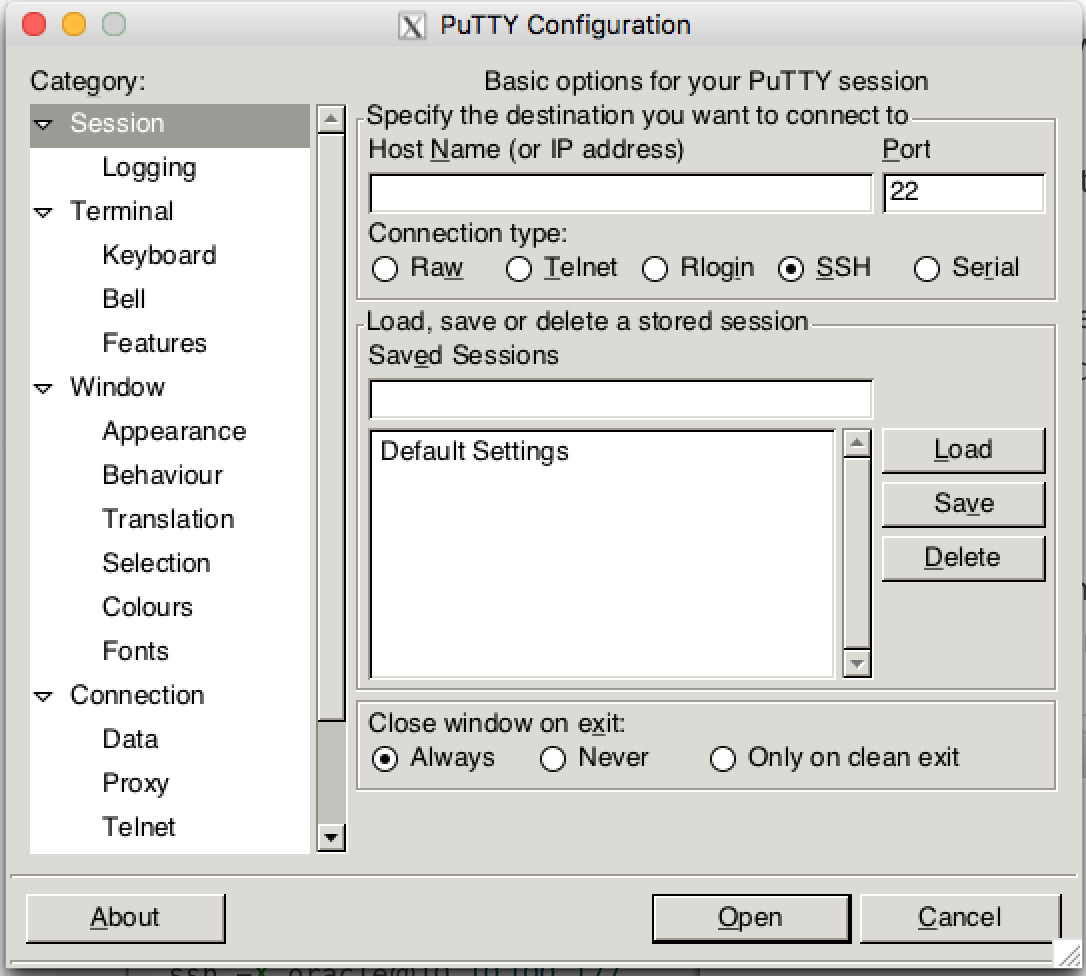
Check out ssh's manual page ( man ssh) sometime to discover all of the different options available with this seemingly simple program. While it might mostly be used in its simplest form, ssh there are literally dozens of uses, with flags and configurations to make connections from one host to another. With this setting in ~/.ssh/config, any ssh connection to the remote host is accomplished by forwarding stdin and stdout through a secure connection from bastion-host. Prox圜ommand in ~/.ssh/configĪs with ProxyJump, Prox圜ommand can be set in the ~/.ssh/config file for hosts that always use this configuration: Host remote-host The %h:%p arguments to the -W flag above specify to forward standard in and out to the remote host ( %h) and the remote host’s port ( %p). The Prox圜ommand itself is a specific command used to connect to a remote server-in the case of the earlier example, that would be the manual ssh command used to first connect to the bastion: $ ssh -o Prox圜ommand="ssh -W %h:%p bastion-host" remote-host Prox圜ommand works by forwarding standard in (stdin) and standard out (stdout) from the remote machine through the proxy or bastion hosts. ProxyJump is the simplified way to use a feature that ssh has had for a long time: Prox圜ommand. An alternative: Forwarding stdin and stdout The ssh command first creates a connection to the bastion host bastion-hostname (the host referenced, by nickname, in the remote host’s ProxyJump settings) before connecting to the remote host.

Using the example configuration above, when an ssh connection is made like so: $ ssh remote-host-nickname The -J flag provides flexibiltiy for easily specifying proxy and remote hosts as needed, but if a specific bastion host is regularly used to connect to a specific remote host, the ProxyJump configuration can be set in ~/.ssh/config to automatically make the connection to the bastion en-route to the remote host: # The Bastion Host For example, a public bastion host giving access to a "web tier" set of hosts, within which is a further protected "database tier" group might be accessed. This feature is useful if there are multiple levels of separation between a bastion and the final remote host. The ssh man (or manual) page ( man ssh) notes that multiple, comma-separated hostnames can be specified to jump through a series of hosts: $ ssh -J, You can also set specific usernames and ports if they differ between the hosts: $ ssh -J To use it, specify the bastion host to connect through after the -J flag, plus the remote host: $ ssh -J The ProxyJump, or the -J flag, was introduced in ssh version 7.3. Ubuntu 16.04 or later View in Desktop store Make sure snap support is enabled in your Desktop store. Instead of first SSHing to the bastion host and then using ssh on the bastion to connect to the remote host, ssh can create the initial and second connections itself by using ProxyJump. Tutorials Forum My account My published snaps My stores Account details Sign out. The ssh command has an easy way to make use of bastion hosts to connect to a remote host with a single command. Linux system administration skills assessment.A guide to installing applications on Linux.Download RHEL 9 at no charge through the Red Hat Developer program.See here for a list of active issues related to SSH.Local proxy settings are not reused on the remote host, which can prevent extensions from working unless the appropriate proxy information is configured on the remote host (for example global HTTP_PROXY or HTTPS_PROXY environment variables with the appropriate proxy information).Either use an SSH key without a passphrase, clone using HTTPS, or run git push from the command line to work around the issue. If you clone a Git repository using SSH and your SSH key has a passphrase, VS Code's pull and sync features may hang when running remotely.



Known limitations Remote - SSH limitations If you need to use an application that bulk reads/write to many files at once (like a local source control tool), rsync is a better choice. You’ll have to unsandbox every time you want to do something that requires a terminal. However, performance will be significantly slower than working through VS Code, so it is best used for single file edits and uploading/downloading content. Yes I have TikTok for reasons but I was seriously bored and tried sshing into my phone without an computer. SSHFS is the most convenient option and does not require any file sync'ing.


 0 kommentar(er)
0 kommentar(er)
